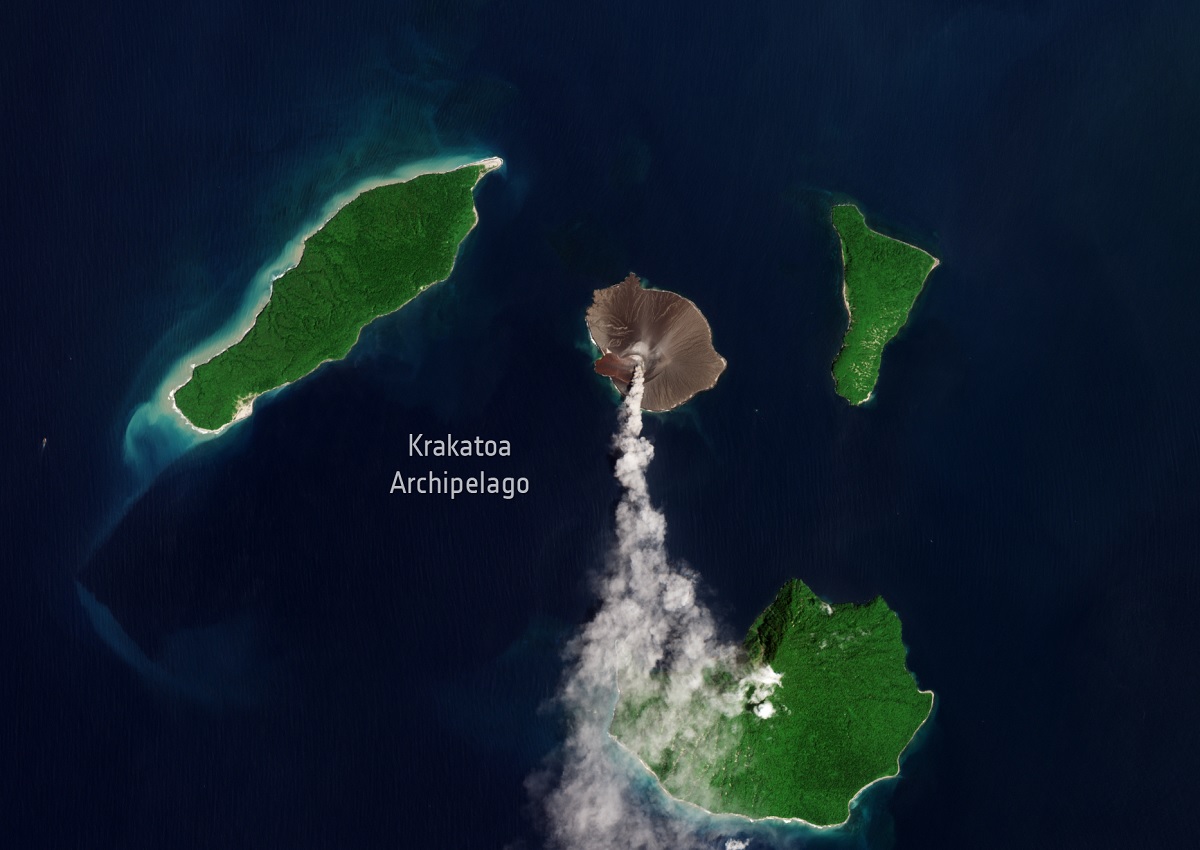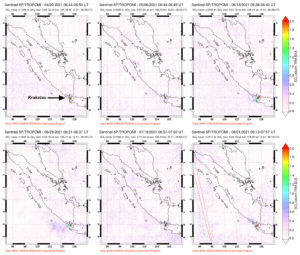
The world-famous Krakatoa Volcano erupted today in Indonesia; the volcano is known for significantly impacting global climate after it erupted in 1883. Scientists are monitoring the volcano, warning locals to stay away should a larger eruption occur. The Anak Krakatau Volcano Observatory (AKVO) raised the color alert level in the area from yellow to orange. Krakatoa is also transcribed as Krakatau and the names have been used interchangeably by officials in Indonesia and scientists tracking the volcanic event.
The Observatory has reported several eruptions at the volcano, with the last to occur around 6pm ET today. That eruption lasted roughly 282 second and show up an ash cloud into the sky to an estimated 5,302 feet. The AKVO reported,” Visuals directly from the CCT were observed eruptions with the color of the thick black eruption smoke 1500m from the top of the volcano”, with winds carrying the cloud of volcanic ash to the northeast of the eruption site.
On May 20, 1883, an eruption at Krakatoa in the Sunda Strait of Indonesia began; the eruption series peaked almost 3 months later on August 27, when over 70% of the island of Krakatoa and its surrounding archipelago were destroyed as it collapsed into a caldera. The 1883 eruption is considered to be even more explosive than the recent Tonga volcanic eruption at Hunga Tonga, which generated a Pacific-wide tsunami and a global pressure wave that went around the Earth several times.
The 1883 eruption was one of the most deadly and destructive volcanic events recorded in history, with the population wiped-off of nearby islands and more than 35,000 people killed. The volcano disaster launched pyroclastic flows, abundant volcanic ash, and triggered multiple tsunamis. There are numerous reports of groups of human skeletons floating across the Indian Ocean and washing up on the east coast of Africa up to a year after the massive eruption.

While the 1883 eruption of Krakatoa was lethal, it had a bigger impact around the world, creating what’s known as a “volcanic winter.” Scientists believe the eruption injected a huge amount of sulfur dioxide gas high into the stratosphere which was then transported around the globe via jet streams. This led to a global increase in sulfuric acid concentration in high-level cirrus clouds which resulted in an increase in cloud reflectivity. Because the sun reflected more light back out to space from the Sun than usual, the entire planet cooled until the atmospheric sulfur precipitated out of the sky over multiple years.
In the year following the eruption, global temperatures dropped and weather patterns altered, bringing about record rains to places like Los Angeles and San Diego, heavy snow to New York City.
It’s too early to know what Krakatoa will do next. In recent months, the volcano has become somewhat active. Throughout 2021, intermittent white gas and steam plumes would rise and drift around the volcano. Throughout the year, NASA Global Sulfur Dioxide Monitoring Page reported weak but distinct sulfur dioxide emissions from above the volcano too.
In November 2021, during periods of clear weather, white plumes and white-to-gray plumes were also seen rising above Krakatau, with incandescence visible inside the crater at least three times. Due to that activity, authorities had the volcano at an Alert Level 2 on a scale of 1-2. The public was advised to remain outside of a 2 km radius zone of hazards from the volcanic crater; a warning that remains to this day.